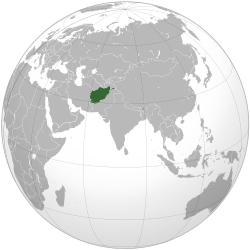Foreign Investments In Afghanistan: A Bridge Too Far? – Analysis
By IPCS
By J Jeganaathan
The recently concluded Delhi Investment Summit on Afghanistan, organised by the Government of India in cooperation with Afghan investment and business organisations, signals India’s new Afghan policy in the post-Osama era. The Delhi Investment Summit seems to reiterate India’s long-term strategy of ‘economic involvement’ instead of ‘political interference’. (Editor’s Note: For a response to this article, click here).
Although there have been multiple analyses of the summit in terms of whether it has attracted any foreign investment, there is a need to examine its rationale and scope. This article examines the same from the politico-security perspectives. This summit elicits two basic questions: Is Afghanistan ready to attract large scale foreign investments? Is the current government competent to tap the foreign investments for common benefits?
Right idea at the wrong time

The idea to host an investment summit was conceived at the third US-India Strategic Dialogue held in June 2012 at Washington D.C. The Washington Dialogue urged India and the US to explore opportunities to work together to promote Afghanistan’s development, specifically in areas such as agriculture, mining, energy, capacity building and infrastructure.
The Delhi summit was planned to attract foreign investment to Afghanistan in areas like mining, hydrocarbons and infrastructure, and also attract funding for traditional sectors like agriculture, industry, capacity-building, health and services. The participants included potential private and public sector investors from the region and beyond – mining companies, chambers of commerce and industry, international and regional development banks and financial institutions, investment funds, and other such institutions.
In order to reduce the economic burden on it because of Afghanistan in terms of financial assistance, the US, which is vary of its allies’ future financial commitments to Afghanistan, has decided to rope in regional powers such as India and Japan to intensify their economic role through large-scale investments. The potential investment sectors identified at the summit were discovered by the United States Geological Survey’s study on Afghanistan as area of interests (AOI).
In this regard, the survey report published in 2010 has classified 24 AOIs based on the type of mineral resources. The Higher priority AOIs are Badakshan gold, Balkhab copper, Haji-Gak iron, Aynak copper and cobalt, Zarkashan copper and gold, Kundalan copper and gold, Khanneshin carbonatite, and Dusar-Shaida copper and tin. Although the US has discovered the deposits of rare earth elements in Afghanistan, it is not capable of exploiting these on its own given its tainted image as an ‘invader’. Any kind of direct investment in these sectors by the US would have further fuelled the insurgency and anti-government sentiments in Afghanistan.
Is Afghanistan prepared to attract foreign investment?
Theoretically, the answer is yes. But in reality, it seems Afghanistan is not yet prepared to attract foreign investment due to the erratic politico-security situation at present, which is made worse by a feeble government functioning in an incohesive socio-politico system. Also, the political future of the country post-2014 is as uncertain as the global economy.
There are several factors that actually create a hostile investment climate in Afghanistan. One of the most prominent factors is the ethno-geographic factor that determines whether the politico-security situation is conducive for economic development based on foreign investments. This factor is also identified as a key indicator for state failure in the recently released Failed State Index. It states that “when there are ethnic, religious, or regional disparities, governments tend to be uneven in their commitment to the social contract, which cause uneven economic development”.
Geologically, these mineral deposits are scattered around the mountainous terrain peopled by diverse tribal communities. Most of these tribal communities are de facto rulers of the locale posing serious challenges to the government’s writ. Moreover, some areas, particularly the southern regions, have not come under the government control. Neither the Afghan police nor the judiciary can enforce their writ over the land in these regions. Unlike in the other sectors such as service and transport, foreign investments in mining and industry will receive strong resistance from the locals, which may further worsen the situation.
‘Political uncertainty hinders economic prosperity and Ethnic polarity hampers political unity’
To conclude, this is too early an initiative to transform Afghanistan’s economy, especially as foreign investments in sectors like mining and hydrocarbons will be seen by the locals as a foreign plunder of their resources. This would also help insurgent groups such as the Taliban or other excluded ethnic groups to galvanize anti-government sentiments.
Moreover, Afghanistan is not politically mature to embark upon market economy at this point of time. And, it would be too naive to believe that a country of warlordism can soon embrace the idea of capitalism. Even though foreign investments are just a policy initiative to strengthen a national economy, it must be implemented at an appropriate time when the politico-security situation is under control, if not stable.
This suggests the need to strengthen the institutional capacity to handle foreign investments in the spirit of national interests. Unless there is an absence of ethnic harmony and political stability, foreign investments in industrial sectors will end in vain. Foreign investments in traditional sectors seem to be less attractive to private players because of more risks and less returns.
J Jeganaathan
Research Officer, IPCS
email:[email protected]
